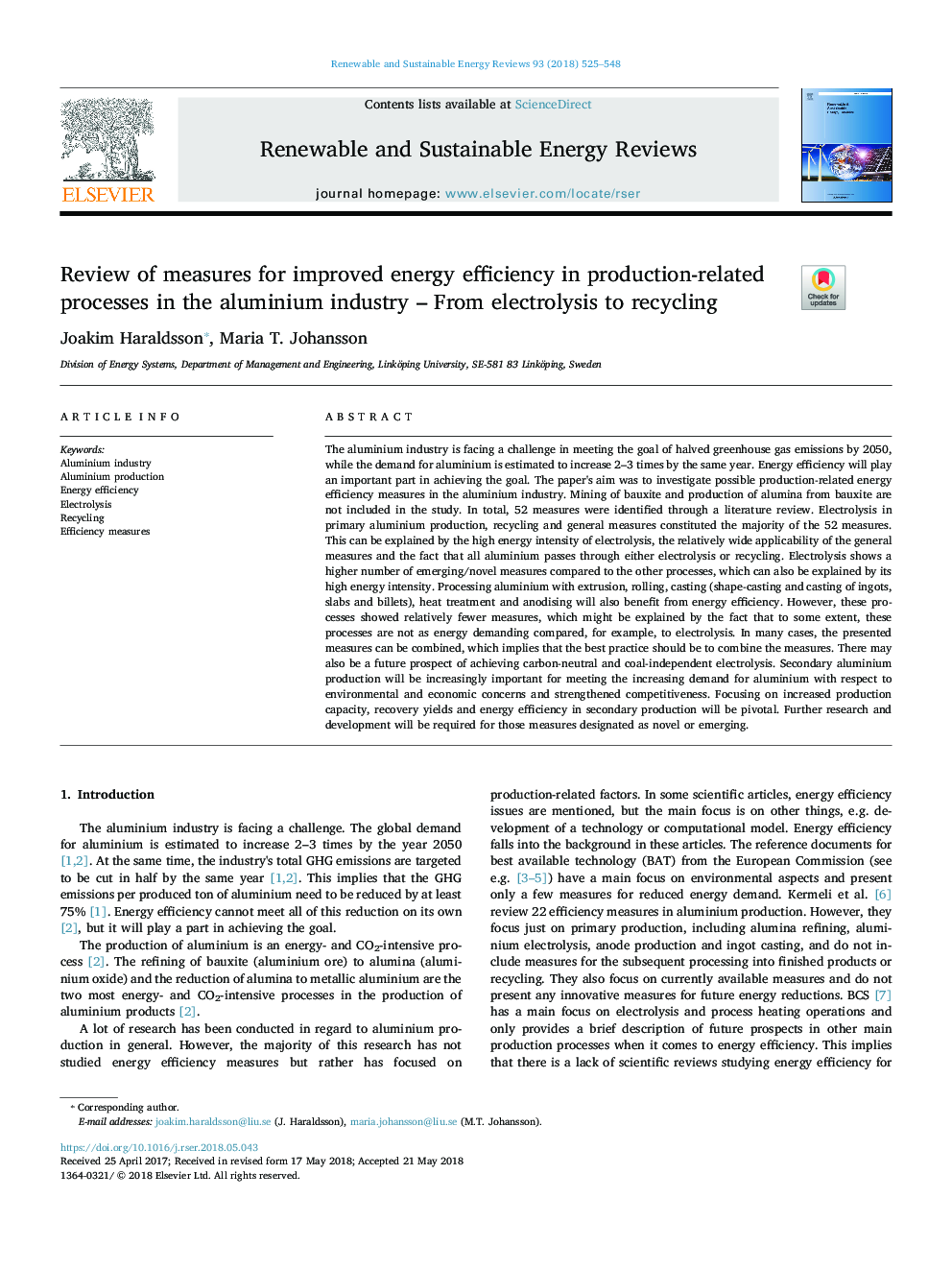| Article ID | Journal | Published Year | Pages | File Type |
|---|---|---|---|---|
| 8110748 | Renewable and Sustainable Energy Reviews | 2018 | 24 Pages |
Abstract
The aluminium industry is facing a challenge in meeting the goal of halved greenhouse gas emissions by 2050, while the demand for aluminium is estimated to increase 2-3 times by the same year. Energy efficiency will play an important part in achieving the goal. The paper's aim was to investigate possible production-related energy efficiency measures in the aluminium industry. Mining of bauxite and production of alumina from bauxite are not included in the study. In total, 52 measures were identified through a literature review. Electrolysis in primary aluminium production, recycling and general measures constituted the majority of the 52 measures. This can be explained by the high energy intensity of electrolysis, the relatively wide applicability of the general measures and the fact that all aluminium passes through either electrolysis or recycling. Electrolysis shows a higher number of emerging/novel measures compared to the other processes, which can also be explained by its high energy intensity. Processing aluminium with extrusion, rolling, casting (shape-casting and casting of ingots, slabs and billets), heat treatment and anodising will also benefit from energy efficiency. However, these processes showed relatively fewer measures, which might be explained by the fact that to some extent, these processes are not as energy demanding compared, for example, to electrolysis. In many cases, the presented measures can be combined, which implies that the best practice should be to combine the measures. There may also be a future prospect of achieving carbon-neutral and coal-independent electrolysis. Secondary aluminium production will be increasingly important for meeting the increasing demand for aluminium with respect to environmental and economic concerns and strengthened competitiveness. Focusing on increased production capacity, recovery yields and energy efficiency in secondary production will be pivotal. Further research and development will be required for those measures designated as novel or emerging.
Related Topics
Physical Sciences and Engineering
Energy
Renewable Energy, Sustainability and the Environment
Authors
Joakim Haraldsson, Maria T. Johansson,
